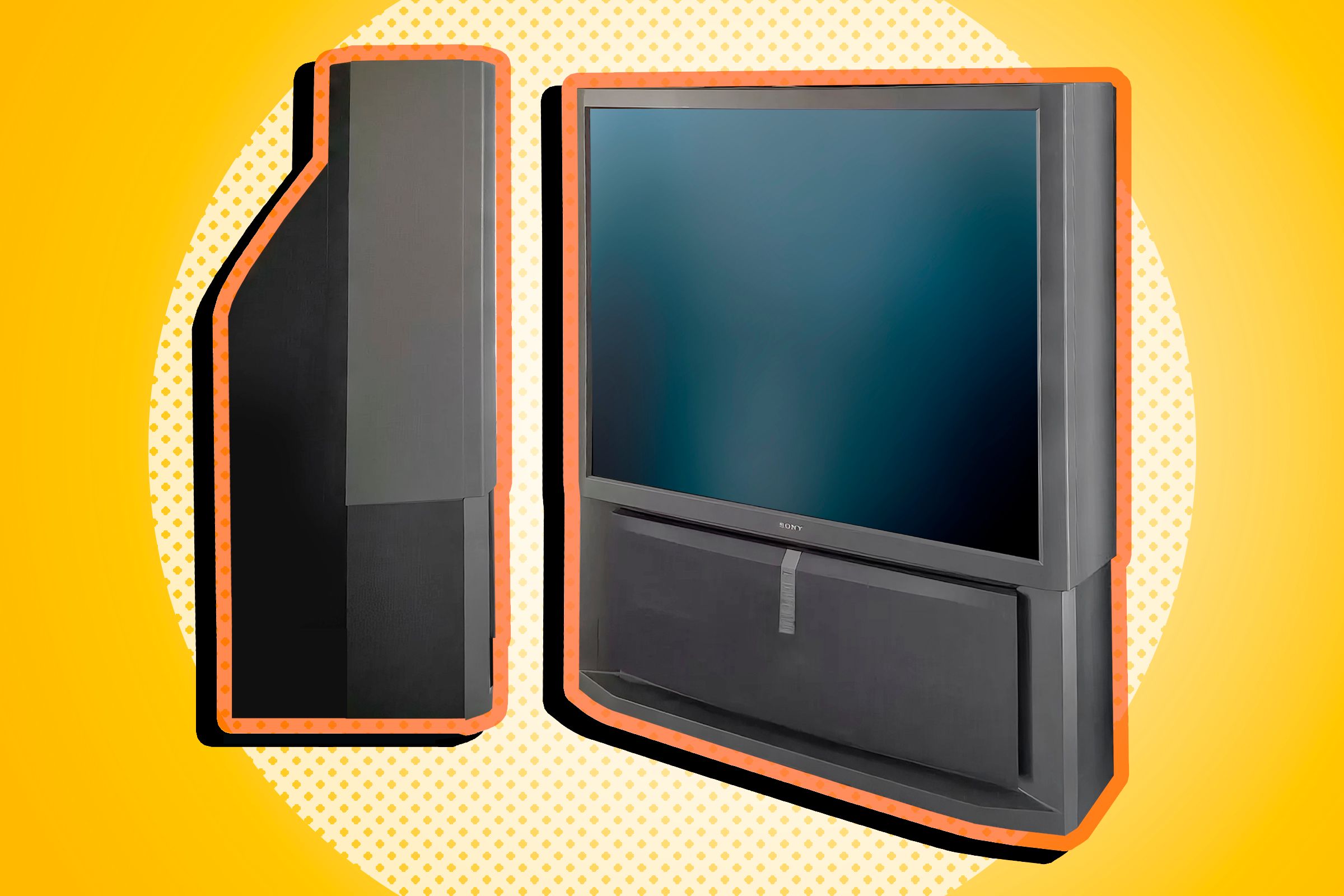Rear projection TVs were once the kings of home entertainment. They offered large screens and great picture quality.
In today’s world, technology has advanced rapidly. Rear projection TVs have become a topic of curiosity for many. These TVs use a unique method of displaying images by projecting them onto the rear of the screen. They were popular before flat-screen TVs took over.
Understanding how they work and their benefits can be interesting. This introduction will guide you through the fascinating world of rear projection TVs. Discover their history, how they function, and why some people still prefer them. Let’s dive into the captivating story of rear projection TVs and see what makes them special.
Introduction To Rear Projection Tvs
Rear Projection TVs have been an essential part of the television history. Understanding their journey and technology helps us appreciate modern advancements. Let’s dive into the fascinating world of Rear Projection TVs.
History And Evolution
Rear Projection TVs first appeared in the 1970s. They became popular during the 1980s and 1990s. Their large screens made them ideal for home theaters. The technology evolved rapidly over the years. Early models were bulky and had limited resolution. Advances in technology improved picture quality and reduced size. By the 2000s, they offered better colors and sharper images. Despite their popularity, they faced competition from LCD and Plasma TVs. This led to a decline in their usage by the late 2000s.
Basic Concepts
Rear Projection TVs use a unique method to display images. They project light from the back of the screen. This light passes through lenses and mirrors to create the picture. Three types of technology were used: CRT, DLP, and LCD. CRT (Cathode Ray Tube) was the earliest and largest. DLP (Digital Light Processing) offered better image quality and slimmer designs. LCD (Liquid Crystal Display) provided bright and clear images. Each type had its own benefits and drawbacks. Understanding these concepts helps us appreciate the technology behind these TVs.

Credit: www.reddit.com
Types Of Rear Projection Tvs
Rear projection TVs have evolved over the years. They offer a unique viewing experience. Different types use varied technologies. Each has its own advantages and disadvantages.
Crt Rear Projection
CRT Rear Projection TVs were the first of their kind. They use three cathode ray tubes (CRTs). Each tube projects red, green, or blue light. These colors combine to form images on the screen.
They offer good color accuracy and deep blacks. But they are bulky and heavy. They also consume more power compared to other types.
Dlp Rear Projection
DLP (Digital Light Processing) Rear Projection TVs use tiny mirrors. These mirrors reflect light to create images. A color wheel adds red, green, and blue colors.
DLP TVs are lighter and slimmer than CRTs. They also offer sharp images and better brightness. One downside is the potential for a “rainbow effect”. This effect happens when colors separate and appear as streaks.
Lcd Rear Projection
LCD (Liquid Crystal Display) Rear Projection TVs use liquid crystal panels. Light passes through these panels to create images. A lamp provides the necessary light source.
LCD TVs are known for their thin design and energy efficiency. They produce bright images with good color accuracy. But they may suffer from lower contrast ratios. This can result in less deep blacks.
Key Features And Technologies
Rear Projection TVs have made a significant comeback due to their advanced features and technologies. They offer an immersive viewing experience at an affordable price. Let’s dive into the key features and technologies that set these TVs apart.
Screen Size And Resolution
Rear Projection TVs boast large screen sizes, often ranging from 50 to 70 inches. This makes them perfect for home theaters and large living rooms. They also offer high resolution, typically 1080p or even 4K. This ensures sharp and clear images, enhancing your viewing pleasure.
Brightness And Contrast
These TVs use advanced technologies to deliver excellent brightness and contrast. They perform well in both dark and bright rooms. Enhanced brightness and deep blacks result in a more vivid and lifelike picture quality. The improved contrast ratio helps in displaying more details, especially in darker scenes.
Sound Quality
Rear Projection TVs often come with built-in speakers that provide decent sound quality. Some models even include advanced audio technologies for a better listening experience. While the built-in sound is good, adding external speakers can further enhance your audio experience.
Advantages Of Rear Projection Tvs
When considering home entertainment options, Rear Projection TVs offer many advantages. Their unique technology and features make them a worthy investment. Let’s explore the key benefits of Rear Projection TVs.
Cost Efficiency
Rear Projection TVs are known for their cost efficiency. They provide a large-screen experience at a fraction of the cost of other large-screen TVs. This makes them a budget-friendly option for many households.
The maintenance cost is also low. The parts are often more affordable compared to other TV types. This ensures that you can enjoy your home theater experience without breaking the bank.
Large Screen Experience
If you crave a cinema-like experience at home, a Rear Projection TV is an excellent choice. These TVs offer large screen sizes. You can have an immersive viewing experience without needing a massive space.
Many models come with screen sizes exceeding 70 inches. This makes Rear Projection TVs perfect for movie nights and sports events. You get to experience every detail vividly and clearly.
Longevity
Durability is a significant advantage of Rear Projection TVs. They are built to last, with robust components that withstand regular use. This ensures a longer lifespan for your TV.
The bulbs used in these TVs can last thousands of hours before needing replacement. This reduces the frequency of maintenance and ensures that your TV continues to perform well over time.
With proper care, a Rear Projection TV can serve your entertainment needs for many years.
Common Issues And Solutions
Rear projection TVs offer a unique viewing experience. Yet, they can have issues just like any other technology. Knowing these common problems and their solutions can save time and money.
Image Quality Problems
One common issue is poor image quality. This can be frustrating. Here are some possible reasons and solutions:
- Dirty Lens: Clean the lens with a soft cloth.
- Outdated Bulb: Replace the bulb if it is old.
- Incorrect Settings: Adjust the brightness and contrast settings.
Sometimes, the image might appear blurry or distorted. This could be due to:
- Misalignment: Realign the projector.
- Signal Interference: Ensure cables are properly connected.
Bulb Replacement
The bulb in a rear projection TV has a limited lifespan. Here’s a simple guide to replacing it:
- Turn off the TV and unplug it.
- Remove the cover panel to access the bulb.
- Take out the old bulb carefully.
- Insert the new bulb and secure it in place.
- Replace the cover panel.
- Plug in and turn on the TV.
Always handle the bulb with care. Avoid touching it with bare hands. Use gloves or a cloth to prevent oil from your skin damaging the bulb.
Calibration Tips
Proper calibration ensures the best image quality. Follow these tips for optimal settings:
- Use a Calibration Disc: These discs guide you through the process.
- Adjust Brightness: Set it so blacks look deep and dark.
- Adjust Contrast: Ensure whites are bright without losing detail.
- Fine-tune Color Settings: Use test patterns to set accurate colors.
Regular calibration keeps your TV’s picture sharp and vibrant.
| Issue | Solution |
|---|---|
| Blurry Image | Realign projector, clean lens |
| Dim Image | Replace old bulb |
| Distorted Colors | Adjust color settings |
By knowing these solutions, you can maintain your rear projection TV. Enjoy a better viewing experience with a few simple steps.

Credit: www.reddit.com
Rear Projection Tv Vs. Other Technologies
Choosing the right TV can be challenging. Rear Projection TVs have their own unique features. Let’s explore how they compare with other popular TV technologies.
Comparison With Lcd Tvs
Rear Projection TVs have larger screens for a lower price. LCD TVs provide sharper images with better color accuracy.
- Screen Size: Rear Projection TVs usually offer larger screens.
- Image Quality: LCD TVs have better color accuracy and sharpness.
- Viewing Angle: LCD TVs offer wider viewing angles compared to Rear Projection TVs.
Comparison With Led Tvs
LED TVs are more energy-efficient. They also have better brightness and contrast.
- Energy Efficiency: LED TVs consume less power.
- Brightness and Contrast: LED TVs outperform Rear Projection in these aspects.
- Screen Thickness: LED TVs are much thinner.
Comparison With Oled Tvs
OLED TVs offer the best picture quality. Rear Projection TVs can’t match the deep blacks and vibrant colors of OLED.
- Picture Quality: OLED TVs have superior picture quality.
- Black Levels: OLED TVs achieve perfect black levels.
- Color Vibrancy: OLED TVs provide more vibrant colors.
- Price: Rear Projection TVs are more budget-friendly.
Buying Guide
Choosing the right Rear Projection TV can be daunting. This buying guide will help you make an informed decision. You’ll learn what to look for, top brands, and the price range for these TVs.
What To Look For
When buying a Rear Projection TV, consider these factors:
- Screen Size: Choose a size that fits your room. Common sizes range from 50 to 70 inches.
- Resolution: Look for a TV with at least 1080p resolution for better picture quality.
- Brightness and Contrast: Higher brightness and contrast ratios provide better viewing experiences.
- Inputs: Ensure the TV has enough HDMI, USB, and other input ports for your devices.
- Viewing Angle: A wider viewing angle ensures a clear picture from different positions.
Top Brands
Several brands offer high-quality Rear Projection TVs. Here are some of the top choices:
- Sony: Known for their excellent picture quality and reliability.
- Mitsubishi: Offers a range of sizes with advanced technology.
- Samsung: Features innovative designs and superior image clarity.
- LG: Provides great value with impressive performance.
Price Range
The price of Rear Projection TVs varies based on features and brand. Here’s a general price range:
| Brand | Price Range (USD) |
|---|---|
| Sony | $700 – $2500 |
| Mitsubishi | $500 – $2000 |
| Samsung | $600 – $2300 |
| LG | $450 – $1800 |
Maintenance And Care
Maintenance and care are crucial for keeping your rear projection TV in good shape. Regular upkeep can extend the lifespan of your TV and ensure optimal performance. In this section, we’ll cover some essential tips for cleaning, regular maintenance, and troubleshooting your rear projection TV.
Cleaning Tips
Dust can accumulate on your TV screen and inside the unit. Use a soft, dry cloth to wipe the screen gently. Avoid using harsh chemicals or abrasive materials. For stubborn spots, use a cloth slightly dampened with water. Ensure the TV is turned off and unplugged before cleaning.
Clean the vents and fans regularly. Dust buildup can cause the TV to overheat. Use a vacuum cleaner with a brush attachment to remove dust from the vents. Be gentle to avoid damaging any internal components.
Regular Maintenance
Inspect the TV for any signs of wear and tear. Check for loose cables and connectors. Secure them properly if needed. Ensure the TV is placed in a well-ventilated area. Proper airflow prevents overheating and prolongs the TV’s life.
Update the TV’s firmware if updates are available. Firmware updates can fix bugs and improve performance. Refer to the user manual for instructions on how to update the firmware.
Troubleshooting
If the TV doesn’t turn on, check the power source. Ensure the power cable is plugged in securely. Try a different outlet if necessary. If the picture quality is poor, check the cables connected to the TV. Replace any damaged cables.
If you notice any unusual noises, such as clicking or buzzing, turn off the TV and unplug it. Contact a professional technician for further inspection. Do not attempt to open the TV yourself.
Future Of Rear Projection Tvs
The future of rear projection TVs promises exciting changes. While flat-panel TVs dominate, rear projection TVs are not obsolete. They are evolving. This evolution could reshape the TV market and viewing experience.
Technological Advancements
Rear projection TVs are seeing new technology. Laser-based projection is one key advancement. It provides brighter images. It also offers better color accuracy. This tech makes rear projection TVs more appealing.
Another advancement is the use of LED lights. These lights last longer. They also consume less energy. This makes rear projection TVs more efficient and eco-friendly. New materials are also being used. They improve screen quality and durability.
Market Trends
The market for rear projection TVs is changing. Niche markets are growing. Home theater enthusiasts still prefer large screens. Rear projection TVs offer this without taking up much space. They are also cost-effective. This attracts budget-conscious consumers.
Educational institutions and businesses are also adopting them. They need large screens for presentations. Rear projection TVs meet this need. They are reliable and offer good value for money.
Consumer Preferences
Consumers are looking for better viewing experiences. They want high-quality images and sound. Rear projection TVs can deliver this. They are also looking for durability. These TVs last longer than many flat-panel models.
Another preference is ease of repair. Rear projection TVs are easier to fix. This makes them a practical choice. Consumers also value energy efficiency. Modern rear projection TVs are meeting this need too.

Credit: www.howtogeek.com
Frequently Asked Questions
What Is A Rear Projection Tv?
A rear projection TV uses a projector to display images onto a screen. It offers larger screen sizes. It is different from flat-panel TVs.
How Does Rear Projection Tv Work?
A rear projection TV uses light to project images onto a screen. It involves a combination of mirrors and lenses.
Are Rear Projection Tvs Still Available?
Rear projection TVs are less common now. They have been replaced by LCD, LED, and OLED TVs.
What Are The Advantages Of Rear Projection Tvs?
They offer large screen sizes at a lower cost. They are good for home theaters.
Conclusion
Rear projection TVs offer a unique viewing experience. They have a large screen size. Prices are often affordable. Technology has improved over the years. Picture quality is now impressive. Rear projection TVs are great for home theaters. They can be a good choice.
Consider space and maintenance needs. Overall, they provide good value. Enjoy your viewing experience!